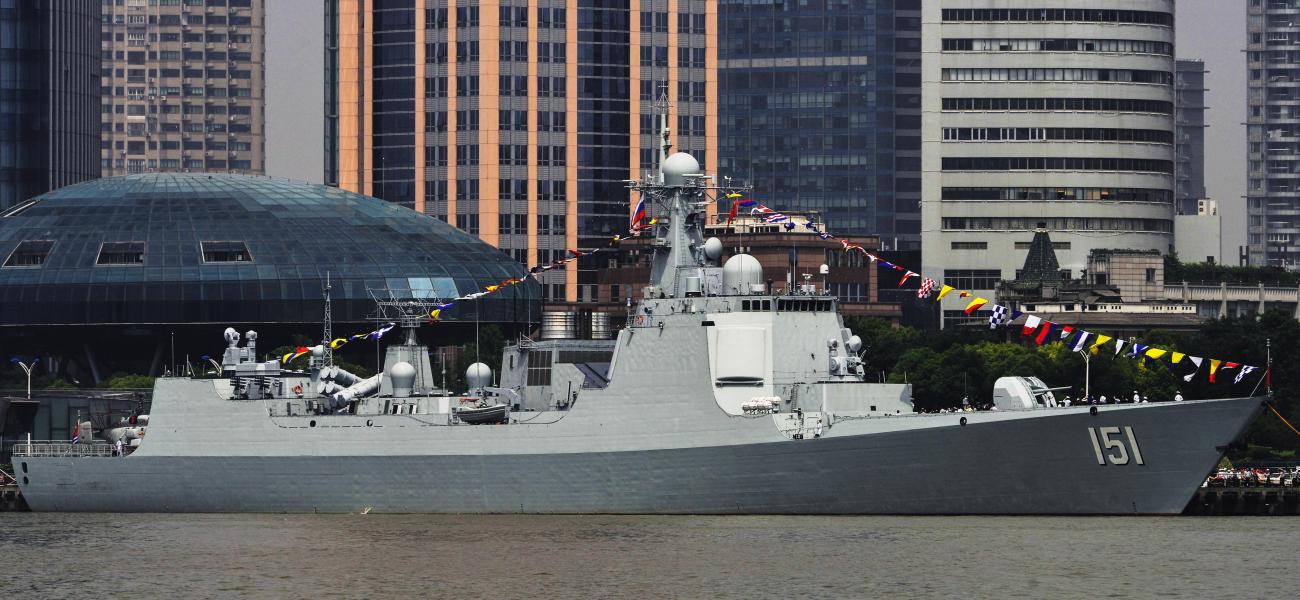In the Thick of It
A blog on the U.S.-Russia relationship
Growing Scope of Russian-Chinese Naval Exercises Points to Closer Ties
As the Russian and Chinese navies hold joint war games for the second time this year, experts can’t help but wonder whether the growing size and geographic range of such exercises mean that Moscow and Beijing are moving closer to a military pact. “They are building a de facto alliance,” leading Russian military expert Vasily Kashin told the Wall Street Journal in reference to the second stage of Joint Sea-2017, which is set to begin this week. “They want to understand on a granular level how their two militaries can cooperate.”
Indeed, a look at the recent timeline of Russian-Chinese naval exercises (see below) reveals that the two countries’ navies have been expanding the number of vessels and locations in their joint war games since at least 2013. This shows that Russian and Chinese leaders want their armed forces to acquire the capability for joint operations. In fact, relations between Russia and China have become close enough that some policy influentials on both sides have begun to advocate a military-political union between the two countries. It remains unclear, however, whether Vladimir Putin would want Russia to enter a formal military alliance with China akin to NATO or the former Warsaw Pact anytime soon, especially given reservations in Russia about conventional military, demographic and economic disparities between Russia and China. However, the longer Russia remains in an antagonistic relationship with the West, the less reluctant Russian leaders may be to enter such an alliance.
Timeline of recent Russian-Chinese naval exercises:
Name and time: Stage 2 of Joint Sea-2017, Sept. 22-26
Location: Seas of Japan and Okhotsk
Scale: 11 ships and two submarines; two deep-submergence rescue vehicles; four anti-submarine warfare aircraft; and four ship-borne helicopters. Russia represented by the Admiral Tributs Udaloy-class destroyer; the Sovershenny corvette; the Igor Belousov rescue ship, carrying the AS-40 deep-submergence rescue vehicle; the R-11 missile corvette; the Sovetskaya Gavan Grisha-class corvette; the Viktor Faleyev hydrographic survey vessel; the MB-93 sea tug; and two diesel-electric submarines. The four-vessel Chinese task force will be led by the Shijiazhuang destroyer.
Aim of the exercise: Improvement of coordination in countering joint maritime threats.
(Sources: China Military Online, 09.20.17; TASS, 09.17.17)
Name and time: Stage 1 of Joint Sea-2017, July 21-28
Location: Baltic Sea off Baltiysk, a coastal city in Russia’s Kaliningrad exclave, its westernmost territory
Significance: First time Chinese navy sent warships to participate in an exercise in the Baltic Sea
Scale: Three Chinese warships and 10 Russian ships, including two of Russia’s new generation Project 20380 corvettes as well as a rescue tug; Ka-27 multi-purpose shipborne helicopters; and Su-24 tactical bombers. China sent the Hefei destroyer; the Yuncheng frigate; and the Luoma Lake supply ship.
Aim of exercise: To “train and improve cooperation procedures at sea,” according to the Russian Defense Ministry.
(Sources: TASS, 09.17.17; The New York Times, 07.25.17)
Name: Joint Sea-2016
Location: South China Sea
Significance: Russia’s consent to participate in an exercise was significant because it was in the South China Sea, where China has disputes over a number of islands with other countries in the region.
Scale: 18 ships and support vessels; 21 aircraft; over 250 marines; and 15 units of military equipment
Aim of the exercise: To practice the organization of all types of naval defense, combat firing at naval and aerial targets, and landing operations.
(Sources: Russia Beyond, 09.22.16; The New York Times, 07.25.17)
Name and time: Second part of Joint Sea-2015 (August)
Location: Peter the Great Gulf, waters off the Clerk Cape, Sea of Japan
Significance: Billed as largest Russian-Chinese naval exercise at the time.
Scale: 23 vessels and two submarines
Aim of the exercise: Live-firing drills, anti-submarine operations and close-support combat drills
(Sources: The Diplomat, 05.22.15; USNI News, 08.17.15; The National Interest, 09.16.16)
Name and time: First part of Joint Sea-2015 (May)
Location: Mediterranean Sea
Significance: First Russian-Chinese naval exercise in Mediterranean. Ahead of the exercise two Chinese frigates visited Russia’s Novorossiysk naval base in the Black Sea—also a first for the Chinese Navy.
Scale: 18 warships
Aim of the exercise: To practice replenishment and escort operations
(Sources: The Diplomat, 05.22.15; USNI News, 05.05.15)
Name and time: Joint Sea-2014
Location: East China Sea
Scale: 14 warships; two submarines; nine airplanes; and six helicopters from China and Russia
(Source: Naval Today, 05.27.14)
Name: Joint Sea-2013
Location: Sea of Japan
Significance: At the time, drills were billed as largest ever Russian-Chinese naval exercises. It was the first time the two navies staged joint military exercises near Peter the Great Gulf, involving the largest single batch of troops the Chinese Navy had dispatched to a joint drill with foreign navies.
Scale: 18 surface ships; one submarine; three airplanes; five ship-launched helicopters; and two commando units.
Aim of the exercise: To practice joint air defense, joint escorts and maritime search and rescue operations
(Sources: USA Today, 07.05.13; Xinhua, 08.19.15)
Name and time: Joint Sea-2012
Location: Waters near the eastern Chinese port city of Qingdao
Scale: 25 warships, 13 planes and nine helicopters, as well as two special-forces contingents
Aim of the exercise: To explore new ways to improve coordination and emergency response under multiple circumstances
(Source: Xinhua, 08.19.15)
The opinions expressed in this commentary are solely those of the author.

